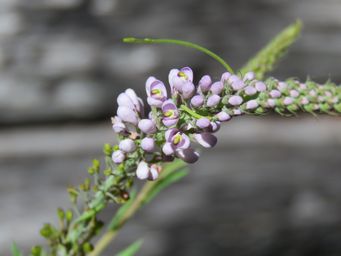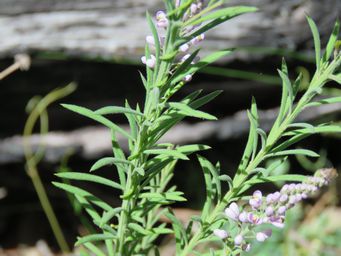Australia So Much to See
Copyright (C) 2013 AustraliaSoMuchtoSee.com. All rights reserved


Sources used for identification of wildflowers shown on these pages and regions where they occur see Credits
These pages will
feature some of the wildflowers we have photographed in Western Australia, and where possible, identified. If you
are able to help identify further flowers, or correct any I may have wrong, please contact us.
Information given for each species
will give botanical name, known common names, describe the flower, give time of year it flowered, and where it was photographed, and
the areas it occurs in. Names have been matched to Florabase which has also been used to show distribution.
See some
of these wildflower in larger sized photos on our Flickr pages.
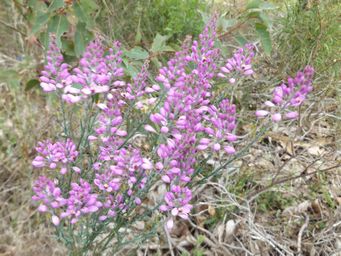
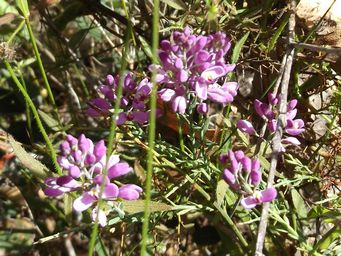
Comesperma virgatum and-or confertum? Milkwort
Tall flexible stems with emerging small purple flowers at the top of the stalk and those lower die off. Flowers basically two oval petals. The specimen above middle left has longer pointed flower clusters and the specimen above middle right has small rounded clusters. Photo above left shows the stiffer foliage with rib indicating Comesperma virgatum. Closed up photos have revealed free sepals of Comesperma confertum.
Tall flexible stems with emerging small purple flowers at the top of the stalk and those lower die off. Flowers basically two oval petals. The specimen above middle left has longer pointed flower clusters and the specimen above middle right has small rounded clusters. Photo above left shows the stiffer foliage with rib indicating Comesperma virgatum. Closed up photos have revealed free sepals of Comesperma confertum.
Late spring to early
summer
Bridgetown, South West Region, Western Australia and both species are found in similar areas; the coastal strip from Geraldton around to Esperance, and through the South West Region
Bridgetown, South West Region, Western Australia and both species are found in similar areas; the coastal strip from Geraldton around to Esperance, and through the South West Region
The other similar species is Comesperma virgatum, which is often found growing in the same area as C. confertum, but besides the different
sepal arrangement the leaves also differ, although appearing much the same from casual observation. With C. confertum the leaves are
quite soft and the edges recurved, whilst the leaves of C. virgatum are thicker, flat and with a prominent vein below (the leaf keel).
Comesperma
confertum grows to around a metre (3’) in height and unless tip pruned by browsing animals, is very upright and sparsely branched,
whilst those that have, develop into a multi-branched shrub although still quite open. It is generally found in near-coastal environments
from Kalbarri to Cape Arid, primarily in non-calcareous sandy soils, which can also overlie limestone or granite.
References:Esperance Wildflowers and Perth Plants, A Field Guide.
Which Comesperma? See photos below.
An important feature with plants in this genus is the sepal arrangement (the lobes
on the outside of the flower, which can be seen at the base of the coloured petals). Basically, if they are all free (unattached)
from each other, although some may overlap, then these belong to one group, whilst another group has two of the sepals joined for
most of their length. With Comesperma confertum the sepals are all free, which is important as it separates this species from another,
although there are other differences.
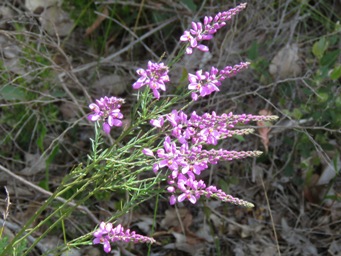
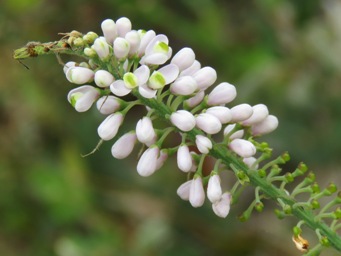
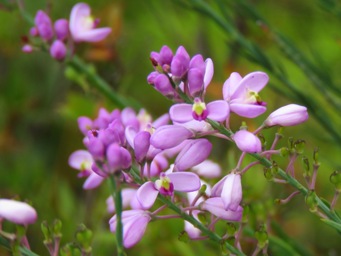
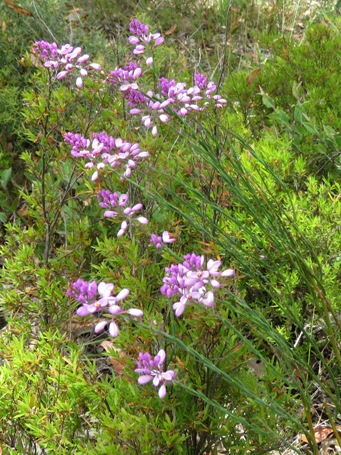
Comesperma drummondii, Drummond's Milkwort
Tall flexible stems with white to pale mauve flowers with a green central tip. With more
prominent, softer and hairier foliage than C. confertum and C, virgatum.
Late spring to early summer
Bridgetown, South West Region, Western Australia and found from Geraldton to Esperance through the Mid West, Wheatbelt and Great Southern, into the South West and into the Goldfields regions.
Bridgetown, South West Region, Western Australia and found from Geraldton to Esperance through the Mid West, Wheatbelt and Great Southern, into the South West and into the Goldfields regions.
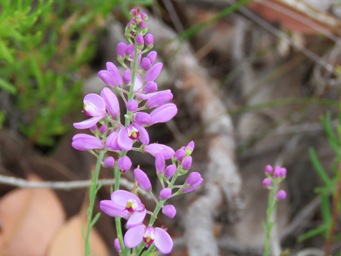
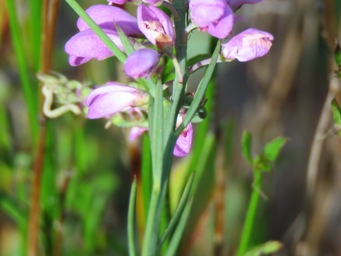
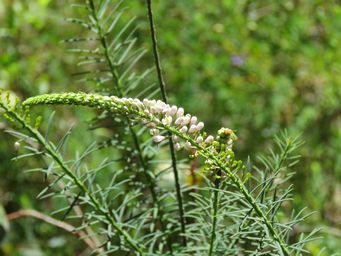
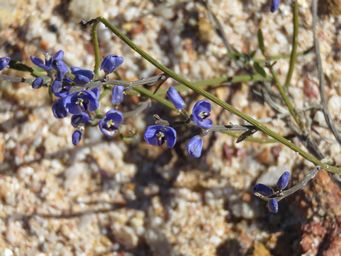
Comesperma scoparium, Broom Milkwort
Blue flowers similar to Comesperma ciliatum, but with stiff ribbed stems, not twining growth
Spring
Kulin,
Wheatbelt Region and occurs through the Mid West and into the Southern Gascoyne, the Wheatbelt, Great Southern, parts of the South
West, and into the Goldfield regions.
